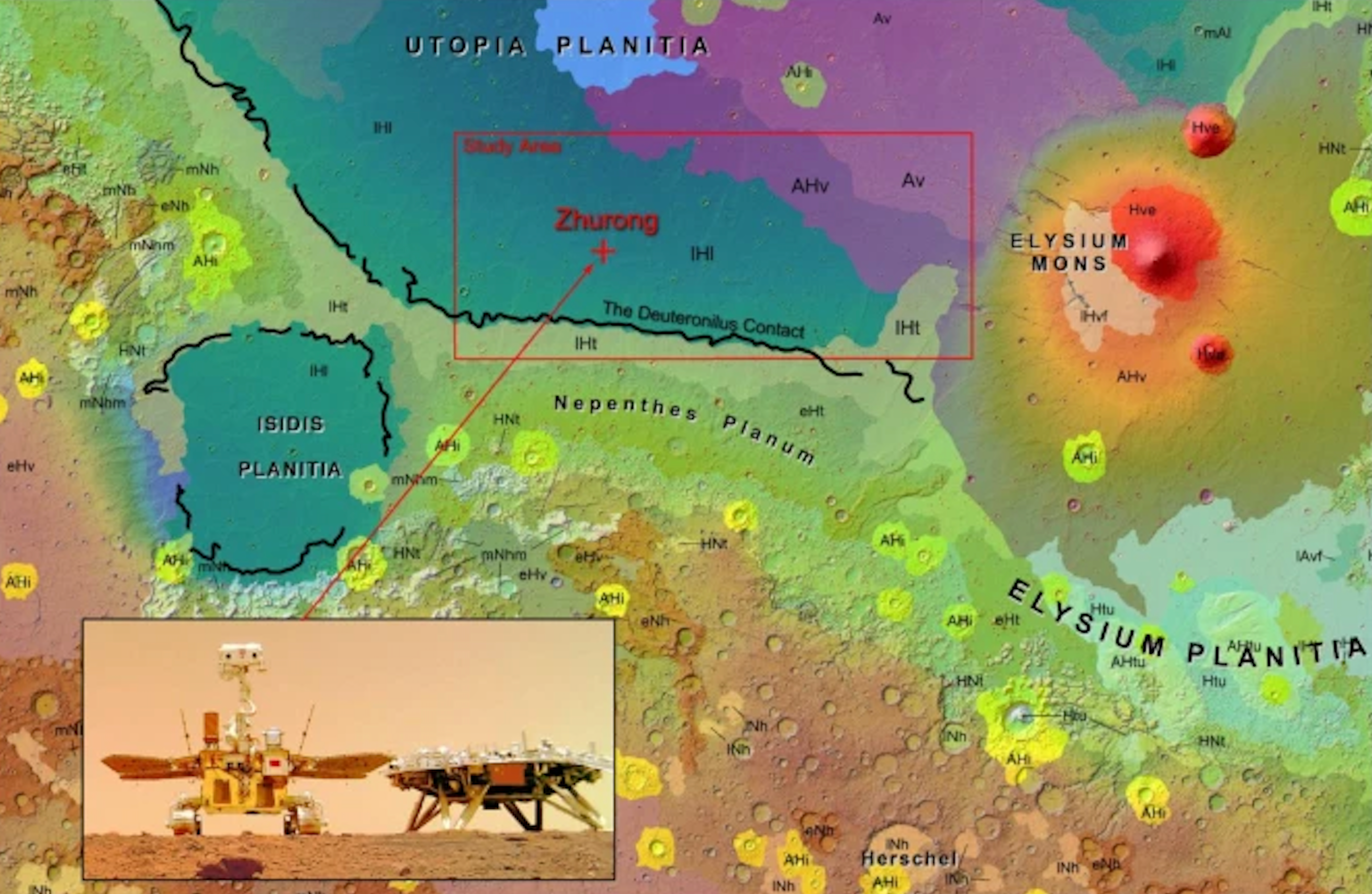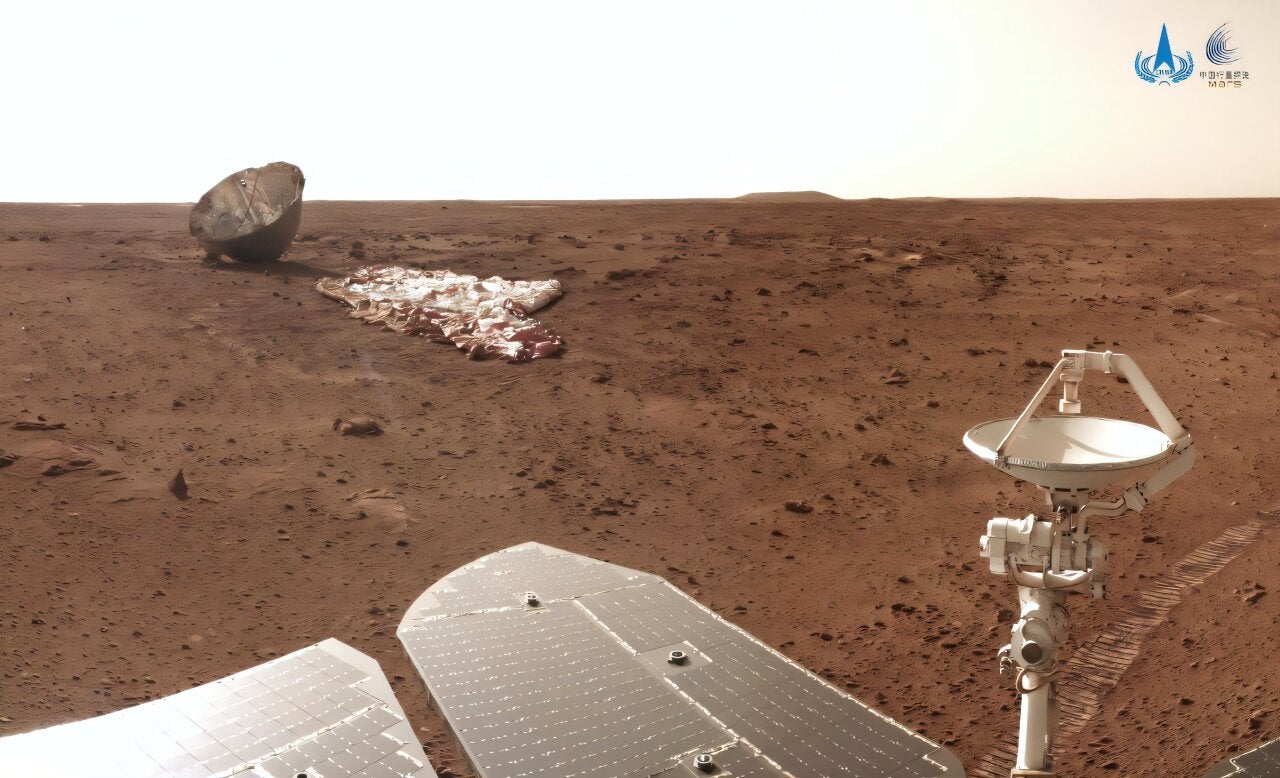China’s Mars rover finds evidence of ancient sea on red planet
Sea likely existed in northern lowlands over 3.5 billion years ago
Your support helps us to tell the story
From reproductive rights to climate change to Big Tech, The Independent is on the ground when the story is developing. Whether it's investigating the financials of Elon Musk's pro-Trump PAC or producing our latest documentary, 'The A Word', which shines a light on the American women fighting for reproductive rights, we know how important it is to parse out the facts from the messaging.
At such a critical moment in US history, we need reporters on the ground. Your donation allows us to keep sending journalists to speak to both sides of the story.
The Independent is trusted by Americans across the entire political spectrum. And unlike many other quality news outlets, we choose not to lock Americans out of our reporting and analysis with paywalls. We believe quality journalism should be available to everyone, paid for by those who can afford it.
Your support makes all the difference.China’s Zhurong Mars rover has found evidence of an ancient coastline on the red planet.
The coastline in the southern Utopia region, detailed in the journal Scientific Reports, was likely left by a sea that briefly existed in the planet’s early history over 3.5 billion years ago.
The Zhurong rover, which landed on Mars in May 2021, has been analysing deposits in Vastitas Borealis, a low plain in the planet’s northern hemisphere.
This region in the planet’s northern lowlands has long been hypothesised to have contained an ocean once.

The fine grains of minerals like hydrated silica found here are more consistent with a coastline origin than from volcanic activity.
Researchers analysed data from the Zhurong rover and the Mars Reconnaissance Orbiter launched in 2005 to estimate surface ages and compositions of minerals found in the southern Utopia Planitia.
The analysis shows distinct geological features like troughs and sediment channels in this part of the planet, consistent with an ancient nearshore zone.
The analysis led researchers to suspect the deposits were formed by a possible flooding event about 3.68 billion years ago. The coastline may have been formed by a short-lived ocean with the sea surface likely freezing and disappearing around 3.42 billion years ago.
“We conducted a comprehensive geomorphological analysis of the landing area using remote sensing data, supplemented by in situ observations, and unveiled features consistent with the existence of a nearshore zone in southern Utopia,” the researchers say.

The scientists caution that these measurements from the Zhurong rover do not provide direct evidence for the existence of an ancient ocean on Mars.
But the analysis heightens the possibility that the southern Utopia Planitia region may have hosted a significant body of water, adding to our understanding of Mars’ evolution.
The researchers hope the findings can help inform decisions about potential landing sites for future missions to investigate the likely existence of ancient water reservoirs on Mars and their role in shaping the planet’s geology.

Join our commenting forum
Join thought-provoking conversations, follow other Independent readers and see their replies
Comments